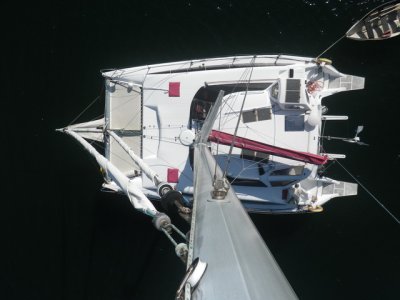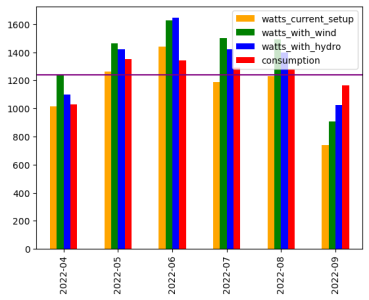Neeves
Well-known member
Most here would not consider wind generation, at all. ITT bought LVM (aka Aerogen) transferred production to China and then closed it all down, presumably because they could not generate sufficient sales. Anecdotally it was said they tried to sell the business and had no takers. Yet at almost the same time a German start up was developing and releasing an updated version of the wind gen. They are now claiming interesting sales numbers (though glancing through the website - no mention of yachts nor marine applications - but I only skimmed through).
Product | SkyWind Energy Inc.
The sales are even more interesting when you consider the price - its not cheap.
I'm sitting at breakfast, there is a brilliant blue sky...... and no, or little, wind.
As a complete aside I have been quoted US $0.15/wp for container loads of 500w solar panels, standard framed panels ex China. I assume a 500w panel is a fairly standard size for a domestic or even large scale array. I further assuming panels for 'our' size are smaller and cost more. I shudder to think how many panels you need to buy to fill a container.
I always rated our Aerogen as it did work 24/7 and often when there was little sun there was wind. However in terms of output it generated more than enough in hydro mode, with a trailing impeller - but of course you did need to be sailing - then a WattnSea enters the equation (also not cheap)
Jonathan.
Product | SkyWind Energy Inc.
The sales are even more interesting when you consider the price - its not cheap.
I'm sitting at breakfast, there is a brilliant blue sky...... and no, or little, wind.
As a complete aside I have been quoted US $0.15/wp for container loads of 500w solar panels, standard framed panels ex China. I assume a 500w panel is a fairly standard size for a domestic or even large scale array. I further assuming panels for 'our' size are smaller and cost more. I shudder to think how many panels you need to buy to fill a container.
I always rated our Aerogen as it did work 24/7 and often when there was little sun there was wind. However in terms of output it generated more than enough in hydro mode, with a trailing impeller - but of course you did need to be sailing - then a WattnSea enters the equation (also not cheap)
Jonathan.


